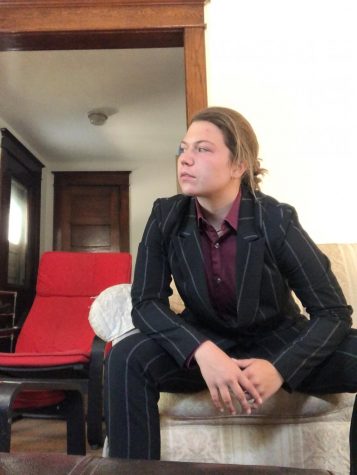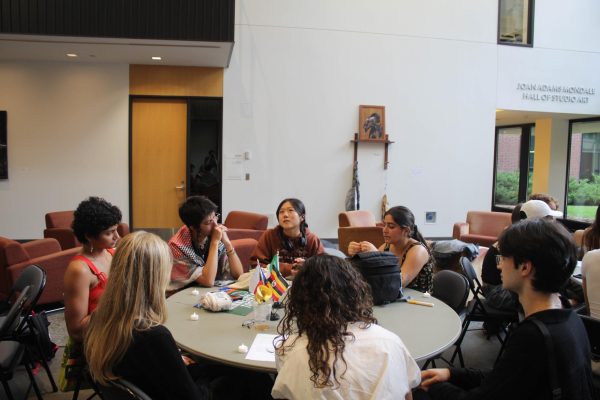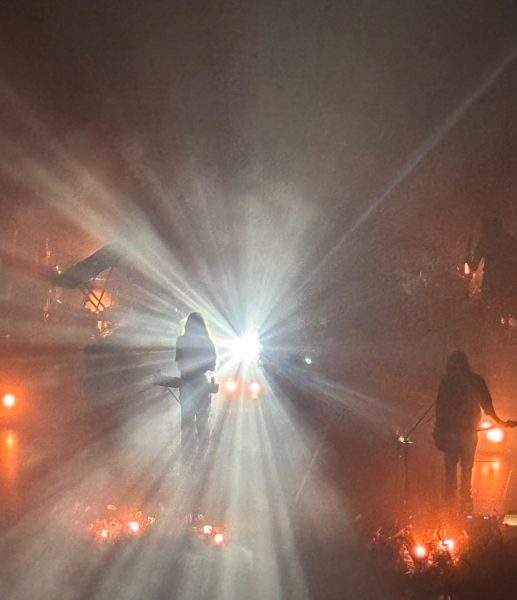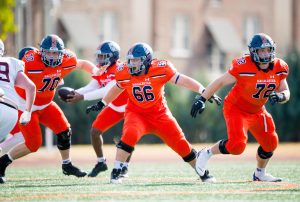Professional team struggles to hold ground against UMN

October 3, 2019
On Sunday, Sept. 22, the University of Minnesota women’s hockey team defeated the Minnesota Whitecaps 5-1 in front of 1,490 fans at Ridder Arena in Minneapolis in their final 2019-2020 preseason game.
The Minnesota Whitecaps play in the National Women’s Hockey League (NWHL) and are one of the league’s top teams. Last year they beat the Buffalo Beauts to win the Isobel Cup, the NWHL championship trophy. The team currently employs seven Minnesota alumnae.
The Gophers have historically dominated the Western Collegiate Hockey Association (WCHA) and NCAA Division I Women’s Hockey.
They’ve won seven WCHA championships and made 20 semi-final appearances since the WCHA added women’s hockey for the 1999-2000 season.
The University of Minnesota has won the most national championships of any women’s hockey team, with six titles in the past 18 years, most recently in 2016.
The Gophers outshot the Whitecaps 57-12. Their dominance is no surprise, considering Minnesota is ranked second in the nation and their roster is full of members of the United States and Canadian National Teams.
The Minnesota players train constantly. They are in college to play hockey and spend most of their time with teammates whether at practice, traveling, or just living together.
Many of the Whitecaps players, on the other hand, have other obligations–most of them work day jobs.
“On the rosters of NWHL teams are teachers, medical professionals, engineers, financial analysts, coaches and trainers, marketing and communications executives and entrepreneurs,” according to the NWHL website.
“Team practices are at night and games are most commonly on the weekends so players can balance their business and hockey careers,” it continues.
With scarce practices and longer stretches of off-season, there is less chance to develop team chemistry and to improve their individual games.
According to NBC Sports, the average NWHL player earns $15,000 per season. In comparison, the average National Hockey League (NHL) salary was $2.9 million in the 2015-16 season.
Despite having less of the puck and the structural disadvantages, the Whitecaps opened the scoring in the last second of the first period.
After a scramble in front of goal on a power play, Jonna Curtiss slid the puck past Gopher goaltender Sydney Scobee ’20.
During the second period the Gopher offense assailed Whitecaps goaltender Amanda Leveille with 25 shots and held the Whitecaps to just four. Grace Zumwinkle ’21 scored in the fourth minute off an assist from Taylor Heise ’22 to tie the score at 1-1.
The team used that momentum to take the lead just four minutes later when Heise snuck one in off an assist from Zumwinkle to put the Gophers up for the first time, 2-1.
Redshirt sophomore Amy Potomak ’21 scored the final goal in the second period during the 18th minute.
With the Gophers up 3-1 in the third period, play settled on the offensive end. The Minnesota defense continued to play well, holding the Whitecaps to just three shots. Despite the more relaxed frontline, Minnesota still scored twice in the third period.
First, Sydney Shearen ’23 scored off an assist from Katie Robinson ’20. This was Shearen’s second game for the University of Minnesota. In the final three seconds of the game, Heise scored again off a pass from Alex Woken ’20. With these two goals, the Gophers solidified the 5-1 win and entered the NCAA regular season on a high note.
The difference on the scoreboard illustrated the gulf between the resources of the Gophers and Whitecaps.
“That’s reflective of women’s hockey not having existing capital rather than anything to do with league management,” Macalester women’s hockey captain Daria Chamness ’21 wrote in a message to The Mac Weekly. “The NHL took a long time to be financially stable and now the NWHL is facing criticism for not immediately having the level of success it took the NHL decades to achieve.”
“The NWHL is facing a lot of flack in the hockey world right now because the pay for players is so low, but they’re doing the best they can with very limited resources,” Chamness continued.
Chamness appreciates both the existence and proximity of the NWHL.
“I only got to watch women playing hockey every four years growing up [during the Winter Olympics], so having the opportunity to introduce new players at Mac to the game in a place where there are women playing pro games every weekend is super special.”
Despite the NWHL’s lack of resources, the league is moving forward. Last year the Whitecaps were the first team to turn a profit, and they sold out TRIA Rink, in St. Paul’s Lowertown neighborhood, every game.
The demand for women’s hockey is growing fast. From 2010-2019 the number of women’s hockey players around the world increased by 17.6 percent. This league gives young players a tangible goal and an opportunity to continue playing after college.
On Sept. 27 and 28, the Gophers opened their official NCAA 2019-2020 season against Colgate University at Ridder Arena with 2-0 and 8-1 wins respectively. They will take on the Minnesota State Mavericks on Friday and Saturday in Mankato.
The Minnesota Whitecaps will open their 2019-2020 season on Oct. 12 at the TRIA Rink against the Metropolitan Riveters.













